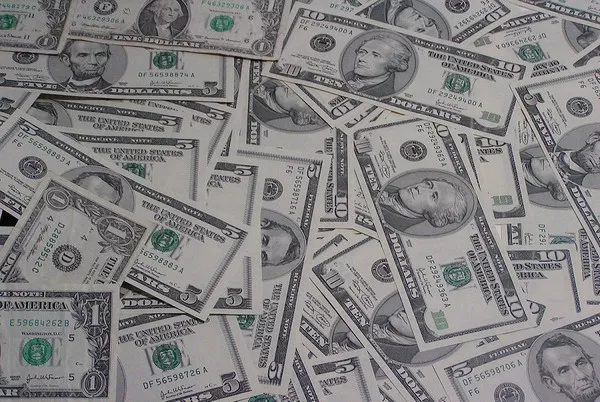Shorting the US dollar, a practice that involves betting against the currency’s value, can be an attractive option for investors seeking to profit from potential declines in its exchange rate. While shorting the dollar may present opportunities for gains, it is crucial to recognize the inherent risks associated with this strategy. In this article, we will explore various ways to short the US dollar, the factors influencing its value, potential benefits, and the important considerations to bear in mind when engaging in such trades.
Understanding Shorting the US Dollar
Shorting a currency involves borrowing it at the current exchange rate and selling it with the expectation that its value will decrease. Subsequently, the investor buys back the currency at a lower rate, thus profiting from the difference. To short the US dollar, an investor can utilize a variety of financial instruments, such as currency futures, options, exchange-traded funds (ETFs), or even currency exchange contracts.
Factors Influencing the US Dollar’s Value
Before attempting to short the US dollar, investors must have a thorough understanding of the factors that influence its value. The US dollar’s exchange rate is subject to a complex interplay of economic, geopolitical, and market-related factors. Some crucial elements affecting the currency’s value include:
1. Macroeconomic Indicators: Key economic data, such as Gross Domestic Product (GDP) growth, unemployment rates, inflation figures, and interest rates, significantly impact the US dollar’s value. Strong economic performance typically strengthens the dollar, while weak indicators can lead to a decline.
2. Monetary Policy: Decisions made by the Federal Reserve regarding interest rates and monetary policy have a profound influence on the US dollar. Higher interest rates tend to attract foreign investment and bolster the currency’s value.
3. Geopolitical Developments: Political stability, trade agreements, and global conflicts can influence market sentiment towards the US dollar. Uncertainties or geopolitical tensions may lead to a depreciation of the currency.
4. Market Sentiment: Investor perception and confidence in the US economy play a pivotal role in the currency’s value. Positive market sentiment often results in a stronger dollar, while negative sentiment can lead to a weaker one.
Shorting the US Dollar: Strategies
1. Currency Futures: One way to short the US dollar is through currency futures contracts. These standardized agreements facilitate the sale of a specified amount of US dollars at a predetermined price and future date. If the exchange rate declines below the agreed-upon price, the investor can purchase the dollars at a lower rate, thereby realizing a profit.
2. Currency Options: Currency options provide investors with the right but not the obligation to buy or sell US dollars at a specific rate within a set time frame. Buying put options on the US dollar allows investors to profit from its decline, while call options enable investors to hedge against potential losses if the dollar strengthens.
3. Inverse ETFs: Exchange-Traded Funds (ETFs) that are designed to move inversely to the US dollar’s value are available in the market. These funds aim to replicate the opposite performance of the dollar, providing investors with an opportunity to profit from its decline.
Benefits of Shorting the US Dollar
1. Diversification: Shorting the US dollar can serve as a diversification tool for investors with a primarily US dollar-denominated portfolio. It can act as a hedge against potential losses stemming from a weakened dollar.
2. Profit Potential: If executed correctly, shorting the US dollar can yield substantial profits when the currency depreciates. This can be particularly advantageous during periods of economic uncertainty or currency fluctuations.
3. Capitalizing on Global Trends: Investors may short the US dollar to capitalize on global economic trends or specific geopolitical events that may impact the currency’s value negatively.
Risks and Considerations
1. Currency Volatility: The foreign exchange market is highly volatile, and currency values can fluctuate dramatically in a short period. Investors must be prepared for rapid changes in exchange rates, which can amplify both potential profits and losses.
2. Leverage: Many currency trading instruments offer high leverage, magnifying both gains and losses. Using excessive leverage can lead to significant financial risks, potentially even exceeding the initial investment.
3. Geopolitical Risks: Geopolitical events, such as political upheavals or trade tensions, can unpredictably impact the US dollar. Investors must stay informed about global developments that may influence currency values.
4. Timing: Timing is crucial when shorting the US dollar. A mistimed trade could lead to losses if the currency strengthens instead of declining as anticipated.
Conclusion:
Shorting the US dollar can be a viable strategy for investors seeking to capitalize on potential declines in its value. However, it is essential to remember that currency trading carries inherent risks and requires a thorough understanding of the factors influencing exchange rates. Investors must carefully assess their risk tolerance, employ appropriate hedging strategies, and stay informed about economic and geopolitical developments that may impact the US dollar’s value. Only by doing so can investors make informed decisions and navigate the complexities of shorting the US dollar effectively.


